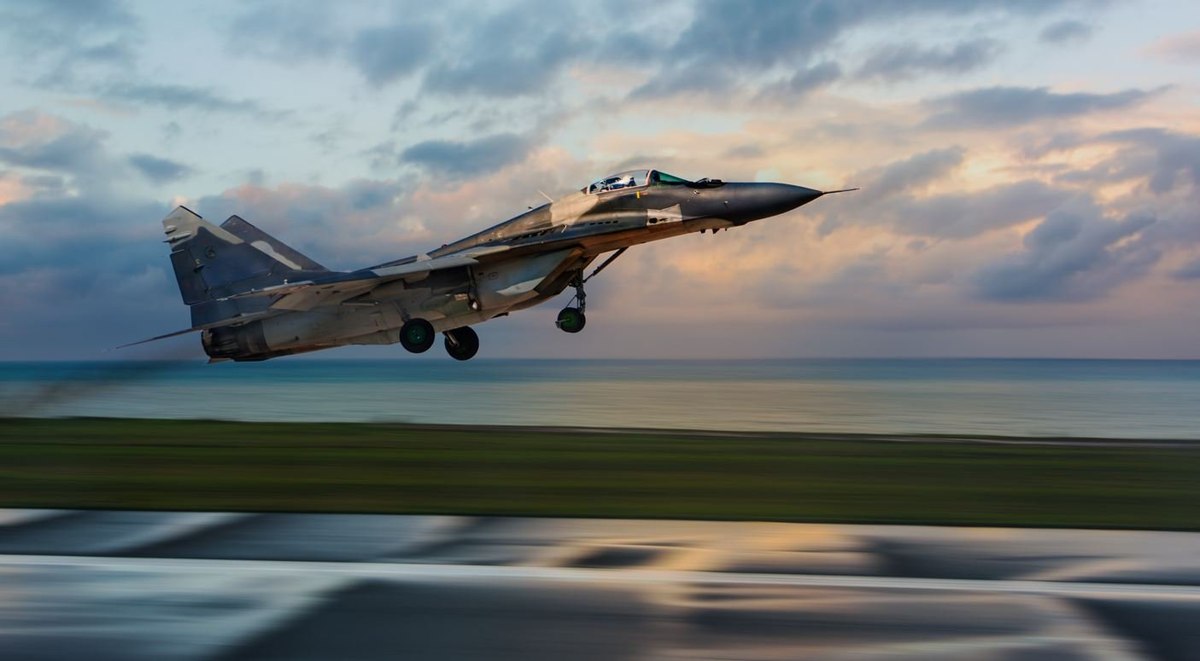Polling in 25 countries shows strong Western resolve towards Ukraine but significant global variation in attitudes to the war.
(This research was originally published by The Guardian here)
If Vladimir Putin is hoping on waning Western resolve to support Ukraine, then new research from the YouGov-Cambridge Globalism Project suggests more bad news for his beleaguered military campaign.
Based on an extensive survey of public opinion in twenty-five of the world’s largest countries, the study shows strong support among a core group of Western publics for a range of military, economic and ‘hybrid warfare’ measures, coupled with limited enthusiasm for concessions to Russia that might form part of a negotiated settlement between Moscow and Kyiv.
However, these sentiments hardly amount to an international consensus, with a number of countries around the world, including within the West, who reflect a more sympathetic or ambivalent line towards the Kremlin.
First on the economic side of the crisis: among thirteen Western or anglophone countries in the study, ten of these show consistent support for maintaining a tough economic posture against Russia because of its actions in Ukraine, even if this leads to economic hardship at home.
Clear majorities support a continuation of sanctions that have been placed on Russia since the war began, including in the United States (62%), Britain (73%), Canada (60%), Australia (68%), France (57%), Germany (58%), Spain (69%), Poland (65%), Sweden (71%) and Denmark (72%).
Large portions in these countries, moreover, think current sanctions are “not harsh enough” and should go further, such as half of Britain, nearly 60% in Sweden, and between 40-50% in France, Germany, Spain and the US.
It also seems that many Western voters are willing in principle to pay an economic price for standing up to Putin.
At least around half of people in these same countries, and notably more in several cases, said they still support the new sanctions regime even if it causes a small increase in the overall cost of living at home, such as 51% in the US and Spain or 66% in Denmark.
When the survey asked the same question but about a “large increase” in living costs instead, the effect was to reduce levels of support in these countries by around 5-10%. Yet results still showed a significant willingness to keep the economic pressure on Russia. For example, while 63% in Britain would still support sanctions if it led to a small increase in living costs at home, 49% said the same in the case of a large increase instead. The respective difference elsewhere included 49% versus 40% in France, 48% versus 38% in Canada, 51% versus 39% in the United States and 66% versus 61% in Denmark.
On the military side, large portions of the public in these countries also express clear support for NATO to provide various forms of help to Ukrainian forces, including certain forms of cyber and information warfare aimed directly at the Russian Government.
This includes substantial levels of support for sending both light arms such as shoulder-mounted missiles and heavier weapons such as long-range artillery, as well as providing intelligence to Ukrainian forces and training camps for them in other countries. It also includes similar expressions of support for sending additional troops to be stationed in NATO countries with borders near to Russia (although less so here in the case of France, at only 33%), and even for sending NATO military advisers to help advise Ukrainian Government forces on the ground, provided they can avoid the fighting themselves.
In other words, for all the public noise this year about the dangers of global nuclear catastrophe erupting from the war, a lot of Western voters are undaunted in their view that NATO should continue sustaining the Ukrainian war effort.
Further to this, there is stronger support still for NATO taking a more active approach to targeting the Putin regime with non-violent measures – sometimes referred to as ‘hybrid warfare’ or ‘integrated action’– inside its own borders. This includes consistent majorities across all ten of these countries who would support NATO measures such as targeting the Russian media with alternative information about the war or sharing sensitive information about how Russian leaders run their country. There is milder enthusiasm, though still generally substantial, for providing support to domestic opponents of the Russian Government or even undertaking cyber attacks that disrupt the economy or military within Russia.
As results also indicate, however, many voters reflect the same overall thinking that governs current NATO strategy in terms of avoiding more direct forms of military escalation or provocation. For example, support for sending covert deployments of Western special forces to help Ukrainian forces falls to between 30-40% in most of these countries, and markedly less in Germany at 20%. Results show a similar pattern for using Western air or naval power to conduct missile strikes directly against Russian forces in Ukraine or deploying regular troops to the country. Likewise for options related to the strategic deterrent, such as placing NATO's nuclear forces on a higher level of alert or increasing the number of nuclear weapons that NATO has stationed in Eastern Europe.
Just as crucially, the same study suggests that many in the West support a less compromising approach to how the conflict might end.
In a further series of questions, respondents were asked to what extent they might support giving four particular concessions to Russia in four different scenarios for an end to the fighting in Ukraine.
The four concessions included: “lifting all economic sanctions placed on Russia since the war started”; “recognising Russian sovereignty over Crimea”; “recognising the independence of Donetsk and Luhansk”; and “a guarantee that Ukraine would never join NATO”. The four scenarios for ending the war included Russian agreement to stop fighting in Ukraine and to give up (1) all, (2) most, (3) some or (4) none of the Ukrainian territory it has gained during the war.
What seems striking about these findings is how generally low the level of support is for giving concessions to Russia in any scenario, and how the difference between scenarios makes only a limited difference to the overall result.
For instance, just 13% in France support recognising Russian sovereignty over Crimea if Moscow gave up none of its new territory from the war; yet only a slightly larger 17% say the same if Putin gave up all of it. The same trend can be seen in Germany (20% for ‘all’ versus 17% for none), Sweden, (13%, 10%), Denmark (14%, 8%), Spain (18%, 16%), Poland (12%, 11%), Britain (10%, 6%), Australia (21%, 16%), the United States (15%, 13%) and Canada (16%, 12%). Responses show a comparable pattern, though with a slightly larger gap between scenarios, for recognising the independence of Donetsk and Luhansk or guaranteeing that Ukraine would never join NATO.
The option of lifting economic sanctions shows the largest shift but this tends to be from mere division to outright opposition. So in Britain for example, just 10% support lifting all economic sanctions if Russia gave up none of its new territory, versus 54% who oppose. If Russia gave up all of this territory, on the other hands, the balance changes to 36% support versus 30% oppose. In Australia, Canada and the United States the respective balance becomes 38% to 30%, 29% to 31% and 32% to 32%.
Another prominent feature of this study, however, is a lack of consistency in the general balance of public opinion outside of a certain, core Western alliance.
Throughout the results, for example, three countries in Europe tell a differing story, namely Greece, Hungary and Italy. In the case of Greece and Hungary, support for maintaining economic sanctions on Russia is more like half what it is in other Western countries at 37% and 32%. Support for military and other hybrid measures is also distinctly lower, such as only fifth in these two countries who support NATO providing heavy weapons like long-range artillery to Ukrainian forces, and around a third in favour of sharing intelligence. Italy often tends to fall somewhere between the two overall distributions of Hungary and Greece on one hand and the more hawkish Western bloc on the other.
Likewise on the subject of possible options for a peace settlement, a third in Greece and Hungary, alongside a quarter in Italy, favour recognising Russian sovereignty over Crimea even if Russia gave up none of its new Ukrainian territory. A third or more in all three countries support keeping Ukraine out of NATO regardless of whether or how much Ukrainian territory Russia agrees to relinquish.
Beyond the West, the Russian Government has more friends, it seems, in Turkey, Egypt and Saudi Arabia, where only around 35% support economic sanctions on Russia, while comparable portions can be seen in Indonesia and Thailand. Support for military measures is also lower, such as barely a third in Turkey, Egypt and Saudi who support NATO sending heavy weapons to Ukraine, and between a quarter to a third who back cyber attacks within Russia.
Image: Getty
Methodology:
All figures, unless otherwise stated, are from YouGov Plc. Total sample sizes were: France=1067; Germany=1183; Sweden=1015; Denmark=1038; Spain=1011; Italy=1007; Greece=1112; Hungary=1006; Poland=1011; Britain=1019; Australia=1005; United States=1054; Canada=1007; Brazil=1065; Mexico=1014; Turkey=1045; Egypt*=1004; Saudi Arabia*=1003; India*=1025; Japan=1074; Indonesia*=1060; Thailand*=1013; Kenya*=1036; Nigeria*=1054; South Africa=1011. Fieldwork was undertaken between 24th August–22nd September, 2022. The surveys were carried out online. For those markets labelled *, the figures have been weighted and are representative of the online adult population aged 18+. For other markets, the figures have been weighted and are representative of the adult population aged 18+. There is a margin of error associated with different sample sizes and different distributions of answers. For a 1000 sample, it is +/- 3% at the 95% confidence level. When reporting results for subsamples, the margin of error will be higher than for the total sample, such as up to +/- 6% for a 300 sub-sample.









